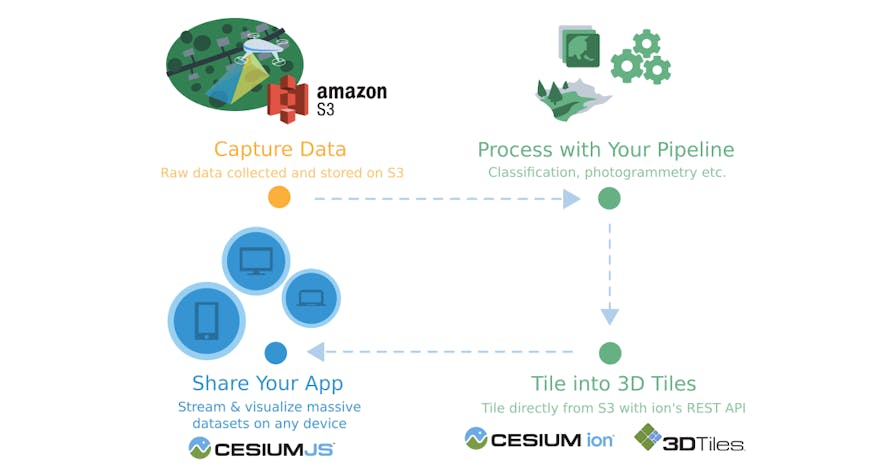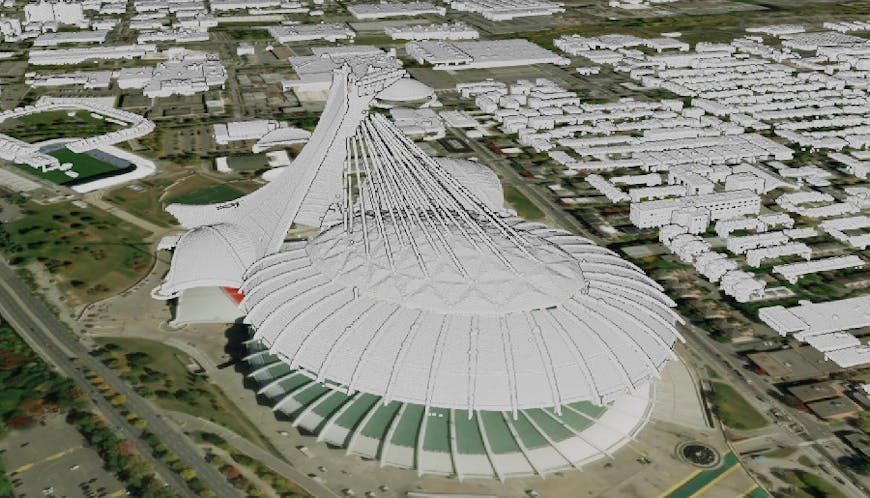Tile Massive 3D Data on Cesium ion Directly from AWS S3
Starting today, you can use Cesium ion to tile data directly from your Amazon S3 storage. If your data is already on S3, this allows you to skip the upload step so you can have a completely cloud-based 3D geospatial workflow.

Tiling directly from S3 enables a fully automated cloud-based workflow for 3D geospatial data.
For example, let’s say you have an automated pipeline for collecting daily LiDAR scans of a particular area and storing them on S3, where they are processed through your pipeline to classify points. You would now be able to use the ion REST API to automatically trigger a tiling job without having to download and re-upload the processed data to your Cesium ion account. That way you can visualize or share these daily captures on any device, or even layer them together in CesiumJS to compare across time.
Tiling from S3 also cuts down on your ion storage costs because only the tiled data is stored in your account, which is significantly smaller than the source data in most cases. Normally, the file-size of the source data is what counts towards your storage quota.
This point cloud dataset of Montreal, Canada is over 100 GB zipped. The 3D Tileset version, which you can find on the Cesium ion asset depot, is only 40 GB.

The olympic stadium in Montreal, Canada. This was tiled from 253 GB LAS files (111 GB zipped) on an S3 bucket. Explore this dataset in your browser.
So not only can you fit a lot more data in your ion account by tiling from S3, you can also tile much larger datasets up to 150 GB of source data per 3D Tileset.
Try tiling data from your own S3 bucket by signing up for a free ion community account.